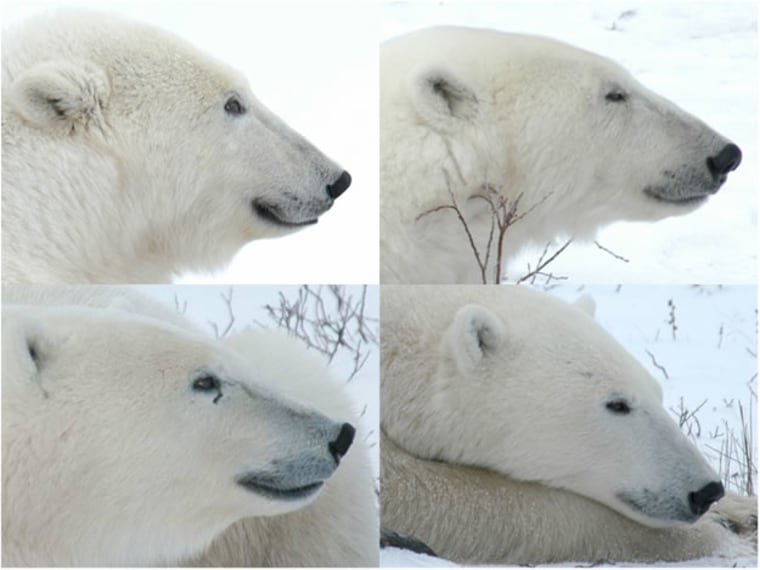If you have taken one or more photographs of polar bears in the wild, noting the date and location of the images, you can participate in the largest-ever study to identify individual bears by their "whisker prints."
Like human fingerprints, the size and arrangement of the spots near a bear's whiskers allow researchers to create a distinct profile for each bear.
"Our real interest is in polar bear behavior, but to understand behavior you need to identify individuals in order to follow them through time and space," Jane Waterman, leader of the project, told Discovery News.
Waterman, an associate professor of biology at the University of Central Florida, often camped out in frigid weather to study the bears, which are listed as "vulnerable" on the IUCN Red List of Threatened Species. She now spends most of her time in sunny Orlando, observing the animals via remote cameras set up on the Canadian tundra.
Images from the cameras, as well as from the public, are going into the first-of-its-kind polar bear photo library. A software program, similar to an algorithm NASA uses to map stars, identifies each bear by its whisker print.
"The software was developed by a former graduate student, Carlos Anderson, now at Michigan State University, whose background is in computer science," UCF biology research associate James Roth told Discovery News. "Carlos wrote a program that used customized computer vision techniques to extract the size and position of whisker spots from a digital image of a bear's facial profile and compare this spot pattern to a library of previously identified bears."
Many studies are possible with the library. The UCF research team has already determined how the thriving tourist industry near Churchill, Manitoba, affects the behavior and land use of polar bears.
"We found that most (bears) did not respond to approaching tourist vehicles or human noise, suggesting the bears in the tourist area are habituated to humans," Roth said, adding that drivers can help to avoid polar bear encounters by adjusting their speed and the angle of their car's approach.
The scientists are also investigating the significance of polar bear play and how a bear's physical condition affects its activity. They are also looking at general use of remote cameras, since the technique could be used to monitor other animals in the wild.
Similar whale shark program
A similar project, utilizing comparable computer software, is the ECOCEAN Whale Shark Photo Identification Library.
As with polar bears, once a whale shark has been photographed, it is been "virtually tagged," since the sharks sport unique sets of white spots that allow scientists to identify individuals.
"The contrast of white whale spots on darker skin is well suited to a machine vision technique known as 'blob extraction,' which measures the locations and dimensions of pixel groups of a single color," explained Zaven Arzoumanian of the Universities Space Research Association and NASA's Goddard Space Flight Center.
"Identifying individuals repeatedly through photography can also inform biological observations, such as age of maturity, growth rate and foraging ecology," he added.
Both past and recent images are welcome for the polar bear photo database project. If you plan to take such photographs in future, Waterman notes that she and her team are particularly interested in sharp, clearly focused close-ups of the bear's facial profile, taken perpendicular to the camera's access.
The Polar Bear Photo-Identification Library Web site contains detailed instructions and examples.
